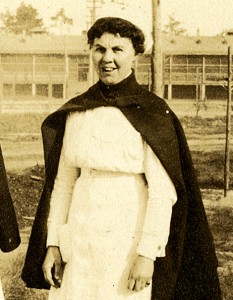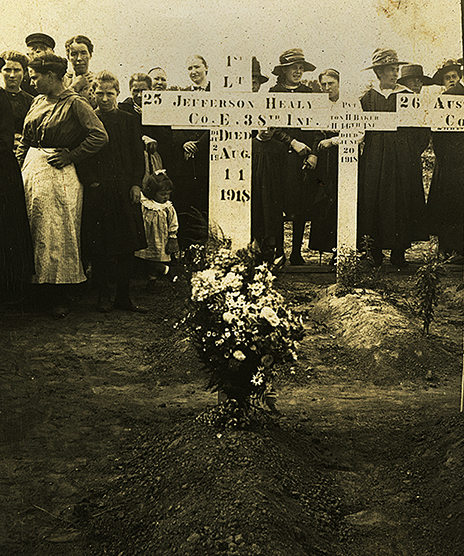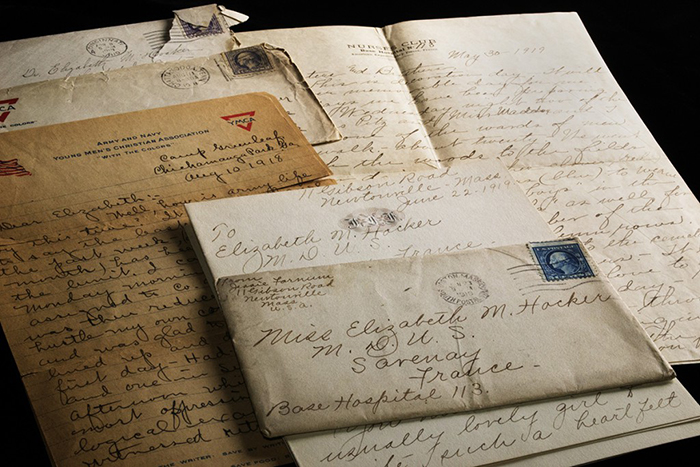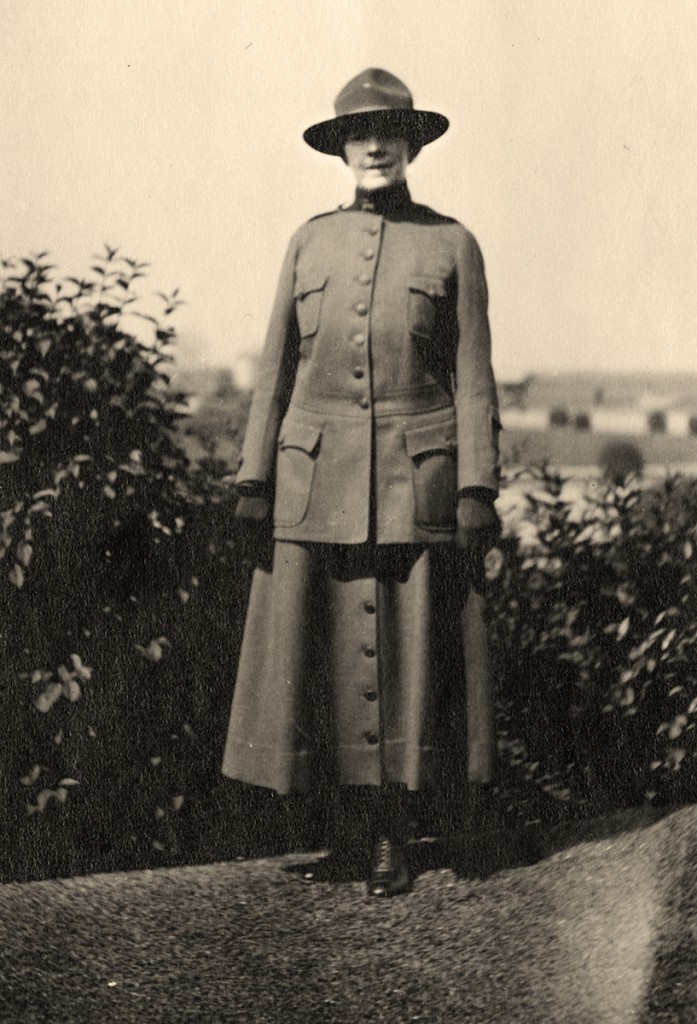"We called them our boys": Primary Sources on WWI Caregiving
by Joanne Murray
The upcoming centennial of America’s entry into World War I - April 6, 2017 - is yet another reminder that the Legacy Center’s collections on women in medicine document the broader themes in American history as seen through the eyes of women.

Nurse Diana Lewis, circa 1917.
Last fall I participated in a colloquium at the University of Edinburgh titled The Hidden History of Caregiving in World War I, which took place during what is known in the UK as “Remembrance Week” and includes the annual commemoration of the Armistice on November 11. I might have chosen to talk about some of the lesser known stories of the American Women’s Hospitals (AWH), an organization born in reaction to World War I, and whose large and significant collection is here at the Legacy Center. There is a great deal of mining to do in that collection, revealing more about the AWH’s efforts to serve the wartime refugee population “over there” and to serve equally with male physicians – and other stories.
But a single photo album from another source, acquired in recent years, was calling out to me. It holds a rich collection of photographs and a few items of ephemera. The album belonged to a nurse, Diana Lewis, who graduated from the Woman’s Medical College of Pennsylvania’s Nurse’s Training School in 1912. She served with the American Expeditionary Forces as a Base Hospital nurse in France. Along with the uniform jacket worn by its owner, the album was displayed in a university-wide “Highlights of the Collections” exhibition. The pages were scanned to document its original state and for easy sharing. But I still had not explored it fully and hoped there might be stories waiting to be told there, so I took a closer look.
Scattered throughout the album are three photographs of temporary grave sites - and I wanted to know why these images had been taken and preserved there.

One of the three gravesite photos in the Lewis album: Lt. Jefferson Healy was wounded at Chateau de Thierry and died three weeks later at Base Hospital 34.
Simultaneously, as I was poking around among the Center’s World War I material, I began thinking about the very few American women physicians who served as such in Europe. Fifty-six women physicians served in the American military, but were not permitted to serve as commissioned officers like their male counterparts. Instead, they were non-commissioned contract surgeons, and only eleven served at the front. Our collections are extremely thin on these women, but serendipitously, I stumbled upon an ebay auction that resulted in the acquisition of letters and some other materials by and to Dr. Elizabeth Hocker, one of the eleven, written during her tour of duty. There are only sixteen letters, but they cover a great deal – including death, dying, and what eventually became my project topic, supported by the photos in the Lewis album: emotional surrogacy for American soldiers in WWI.

Hocker correspondence: The grateful letter at the top is from the mother of Pvt. Paul Farnum to Dr. Hocker, who had sent Mrs. Farnum flowers from his gravesite.
The album and the letters inspired my exploration of end-of-life care during the war. The requirements of so many and with so few to serve, coupled with the concerns of distant families, created a new level of emphasis on emotional and logistical support. With an ocean between "our boys" and home, medical personnel began unexpectedly playing a significant role as surrogate family members and communicators. This type of caregiving was expanded for Americans because of distance – and because of an important related factor: Americans’ beliefs and rituals surrounding death and the ways in which those ideas, centering on “the good death”, had been affected by the American Civil War about fifty years earlier. The socially and politically charged history of care for the dying and dead in that conflict had a significant impact on the work of American caregivers in the first world war.

Elizabeth Hocker, MD circa 1917.
It was not easy to stay focused as I perused the photo album and correspondence collection. The images and letters document a wide variety of subjects, some more fully than others, including transportation, base hospital facilities, care of the wounded, camaraderie, attitudes toward “the Hun” and “our boys”, danger levels, wartime medicine, trenches, military exercises, holidays, French soldiers and civilians, valor, family, influenza, women, African-American troops, and of course, my particular interest: death, dying and emotional surrogacy.
I've developed a personal attachment to these materials, as archivists and historians do, and I'm eager to promote their use – especially now as opportunities arise to further examine the history of World War I and women’s roles in that conflict. As we commemorate the centennial of America’s entry into World War I, I think of Elizabeth Hocker’s words: “Our boys will have their praises sung for the next century.”
And we will, of course, remember what “our boys” did a hundred years ago. But it is also important to remember our caregivers, many of whom were women – those who worked ceaselessly to counterbalance acts of war and retain our humanity. The personal stories found in the Lewis and Hocker collections are waiting to be explored further and add to the body of knowledge on World War I – from the perspective of women in medicine.
If you would like to research any of these topics or items, please get in touch! CoM_Archives@drexel.edu